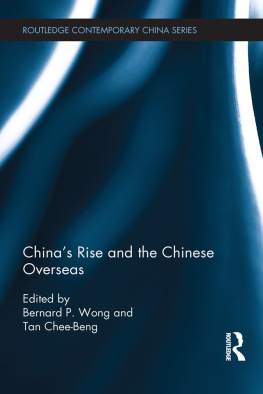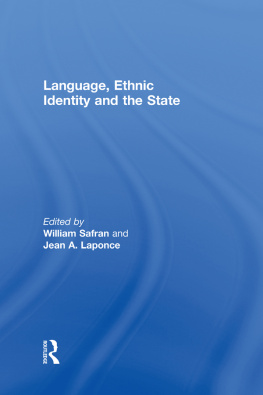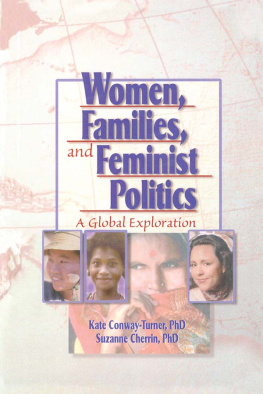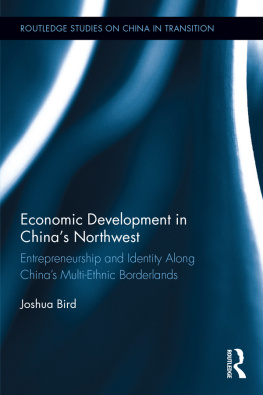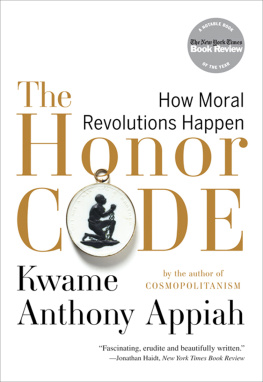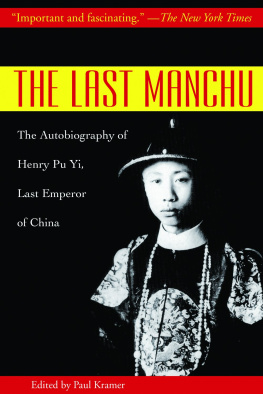FOOTBINDING AS FASHION
FOOTBINDING
AS FASHION
________________________________
ETHNICITY, LABOR, AND STATUS
IN TRADITIONAL CHINA
________________________
JOHN ROBERT
SHEPHERD
_______________
UNIVERSITY OF WASHINGTON PRESS
Seattle
Copyright 2018 by the University of Washington Press
Printed and bound in the United States of America
Cover and interior design by Katrina Noble
Composed in Minion, typeface designed by Robert Slimbach
22 21 20 19 185 4 3 2 1
All rights reserved. No part of this publication may be reproduced or transmitted in any form or by any means, electronic or mechanical, including photocopy, recording, or any information storage or retrieval system, without permission in writing from the publisher.
UNIVERSITY OF WASHINGTON PRESS
www.washington.edu/uwpress
LIBRARY OF CONGRESS CATALOGING-IN-PUBLICATION DATA
Names: Shepherd, John Robert author.
Title: Footbinding as fashion : ethnicity, labor, and status in traditional China / John Robert Shepherd.
Description: First edition. | Seattle, Washington : University of Washington Press, [2018] | Includes bibliographical references and index. |
Identifiers: LCCN 2018012491 (print) | LCCN 2018027211 (ebook) | ISBN 9780295744421 (ebook) | ISBN 9780295744414 (hardcover : acid free paper) | ISBN 9780295744407 (paperback : acid free paper)
Subjects: LCSH: FootbindingChinaHistory. | WomenEmploymentChina. | WomenChinaSocial conditions.
Classification: LCC GT498.F66 (ebook) | LCC GT498.F66 S45 2018 (print) | DDC 391.4/130951dc23
LC record available at https://lccn.loc.gov/2018012491
COVER ILLUSTRATION: Women and Children, courtesy of Sidney D. Gamble Photographs, Archive of Documentary Arts, David M. Rubenstein Rare Book and Manuscript Library, Duke University.
The paper used in this publication is acid free and meets the minimum requirements of American National Standard for Information SciencesPermanence of Paper for Printed Library Materials, ANSI Z39.481984.
FOR THREE MENTORS:
Arthur P. Wolf, 19322015
Ramon H. Myers, 19292015
G. William Skinner, 19252008
When Adam delved and Eve span, who was then the gentleman?
JOHN BALL, 1381
Contents
Illustrations
FIGURES
MAPS
TABLES
Acknowledgments
Over the many years during which the material for this book has taken shape I have incurred many scholarly debts, which I am pleased to acknowledge here.
My research in the historical demography of Taiwan has benefited from my participation in the Population and Society in Taiwan and the Netherlands research group, organized by the late Arthur P. Wolf, Theo Engelen, and Chuang Ying-chang, in conjunction with the Program for Historical Demography of the Research Center for Humanities and Social Sciences, Academia Sinica, Taipei. At the Program for Historical Demography, Yang Wen-shan, Chen Shu-juo, Huang Yu-lin, and others have provided much valuable assistance, as has Fan I-chun at the Center for Geographic Information Science, Academia Sinica. I have benefited in many ways from my association with colleagues at Academia Sinica, particularly in the Institute of Taiwan History and the Institute of Ethnology, who have generously shared their deep knowledge of Taiwan and its peoples.
The work from which this project sprang received generous support from many sources. A Fulbright-Hays Faculty Research Abroad Fellowship and a Chiang Ching-kuo Foundation for International Scholarly Exchange Scholar Grant made possible a year in Taiwan in 20067 at the Program for Historical Demography, Academia Sinica. A University of Virginia sesquicentennial research leave and a grant from the School of Historical Studies made possible a year at the Institute for Advanced Study, Princeton, New Jersey, in 20034. A Mellon Postdoctoral Fellowship in Anthropological Demography, spent in the Department of Demography, University of California, Berkeley, in 199798, provided invaluable training. Grants from the Weedon Fund of the University of Virginias East Asia Center are gratefully acknowledged.
For opportunities to present my ongoing research on footbinding, I thank the Hong Kong Institute for the Humanities and Social Sciences at the University of Hong Kong, 2011; the Department of Anthropology and the East Asia Center at the University of Virginia, 2012; and the Program for Historical Demography and the Institute for Taiwan History, Academia Sinica, 2013.
I thank my colleagues in the East Asia Center and the Department of Anthropology at the University of Virginia for their help and encouragement. I am especially grateful to the Library Express On-Grounds service and the Scholars Lab of Alderman Library for their assistance. I owe special thanks to Calvin Hsu, formerly East Asia librarian, for help in locating documents, and to Chris Gist for preparing maps.
I would like to express my gratitude to the several colleagues who offered criticism and encouragement in response to earlier drafts of the chapter on footbinding during the Qing conquest, including Sue Naquin, Matt Sommer, Nicola Di Cosmo, Lynn Struve, Pamela Crossley, anonymous reviewers, Hu Minghui, and the editors of Frontiers of History in China.
Louise Edwards and Bill Lavely read the manuscript in full for the University of Washington Press and offered invaluable critiques and suggestions that greatly improved the final product. I very much appreciate the expert editorial help of Lorri Hagman and the staff of the University of Washington Press. Of course, none of these individuals bears responsibility for the deficiencies that remain.
Friends and colleagues who have provided help and support of many kinds include Chen Yung-fa, Myron Cohen, Stevan Harrell, Chis Isett, Maria and Phil Morgan, David and Ceceile Strand, and Janice Stockard. I have learned much (she would say too little) from my favorite sparring partner on all things footbinding, Hill Gates. Arthur Wolf, who followed the development of this project over many years, is greatly missed. And last but not least, I express my thanks to the Shepherd, Link, and Train families, whose company I always enjoy.
Abbreviations
When necessary to distinguish among languages, the following abbreviations precede romanized terms:
CChinese
HHokkien
JJapanese
KKorean
MManchu
Chronologies
LATER CHINESE DYNASTIES |
Tang | 618907 |
Five Dynasties | 907960 |
Liao | 9071125 |
Northern Song | 9601127 |
Jin | 11151234 |
Southern Song | 11271279 |
Yuan | 12791368 |
Ming | 13681644 |
Qing | 16441911 |
POST-IMPERIAL CHINA |
Republic of China | 19121949 |
Peoples Republic of China | 1949 |
QING REIGN PERIODS |
Tianming (Nurhaci) | 16161626 |
Tiancong (Hong Taiji) | 16271635 |
Chongde (Hong Taiji) | 16361643 |
Shunzhi | 16441661 |
Kangxi | 16621722 |
Yongzheng |



